The downside to them however, is they take over land, anywhere their long tendrils can make contact. Water isn't a problem either, as they can even sprout roots in it too!
Add water - will travel
I had a styrafoam box near the sweet potato patch, that collected some rainwater. The tendril found its way into the water and started growing roots. I'll have plenty of propagation material to transplant - not only, water grown slips with roots, but I also have unearthed roots which are starting to sprout as well.
Loves to grow!
I suspect I will be plucking sweet potatoes in the newly renovated garden beds, as I wouldn't have gotten every single piece. Sweet potato is like comfrey and horseradish. Once you break off any part of the root, it regrows! I will just have to be persistent in plucking it out, as it appears.
But where to grow my sweet potatoes in the meantime, that wouldn't be so problematic with spreading? I had the perfect spot, right next to a swale. The tree branches are laying in the swale, waiting for us to break them down and remove them somewhere else.
The new area
Gosh, but the soil is awful here. Compacted clay for the most part, with just a hint of bush debris, trying to pretend to break down. It's been there for years, under the weed mat and pallets, we put down a long time ago.
Under the weed mat
And did I also mention it was compacted clay, so extremely hydrophobic? The natural tendency is for the earth to become so dry, enormous cracks appear, to catch any moisture that might come its way. Once filled with water (generally when the rainy season arrives) the cracks then close up, until the soil is drained of moisture again. Then the cycle repeats.
Cracks
It's a terrible, and yet perfect area to grow the wandering sweet potato in. Any escaping tendrils, have no hope of penetrating the soil, to root and spread again. This is my dry land, Alcatraz!
But I did need to improve the soil in the bed, where I intended to grow the main crop of sweet potatoes in. I also needed to elevate it, so the roots wouldn't be swamped when the swale did eventually fill with rainwater.
Local fertility
Enter a local entrepreneur with stable stalings for sale at the farm gate. Cheapest price I've ever seen it anywhere in this region, at $1.50 a bag. It's a few minutes drive down the road from here. Once I got it home though, I realised my wheelbarrow was full. Thankfully, my trolley was on standby and could cart the bags for me instead.
Can you see, one of the newly removed pallets, now leaning against the tree (above)? Any guesses as to where the second pallet might have gone?
A chicken thing
Is there any problem a chicken cannot solve on the farm? I couldn't get the tufts of grass, which had managed to grow on top of the weed mat, and through the pallet. So the whole lot went into the chicken coop. I'm glad I renovated the coop, to allow me accessibility like this now. It's priceless!
I have an update on the chickens, and their coop, to write about later. But they enjoyed the strange, new platform, they could stand on, nibble at and basically "own", as new Hilltop real estate. And I don't have to feel like an old lady, wrestling a wooden pallet, in need of a lawn mower.
Luckily, my brain remembered, the only reason I kept chickens in the first place, was to do all my problem solving for me!
Break it up
So back to the sweet bed. After removing the weed mat and relocating the pallets, I broke up the clay with a mattock and added some gypsum. If you're trying to grow anything in clay, gypsum is your friend. It helps to separate the soil particles and allows water to penetrate, rather than run off the surface.
I used several handfuls of gypsum. Plus I added the three bags of horse manure, and 20 litres of spent coffee granules, from David's work. After I mixed it up with a fork, mounded as high as it would go, I finally watered it well.
Build it up
I'll give it a turn every three days or so, and in about a month, it should be ready to transplant my sweet potatoes in.
It will be interesting to see if this new arrangement works, come next autumn, and whether the chickens will have dismantled the pallet for me, by then too.
Are there any unique tasks, you've engaged your chickens to sort out for you?

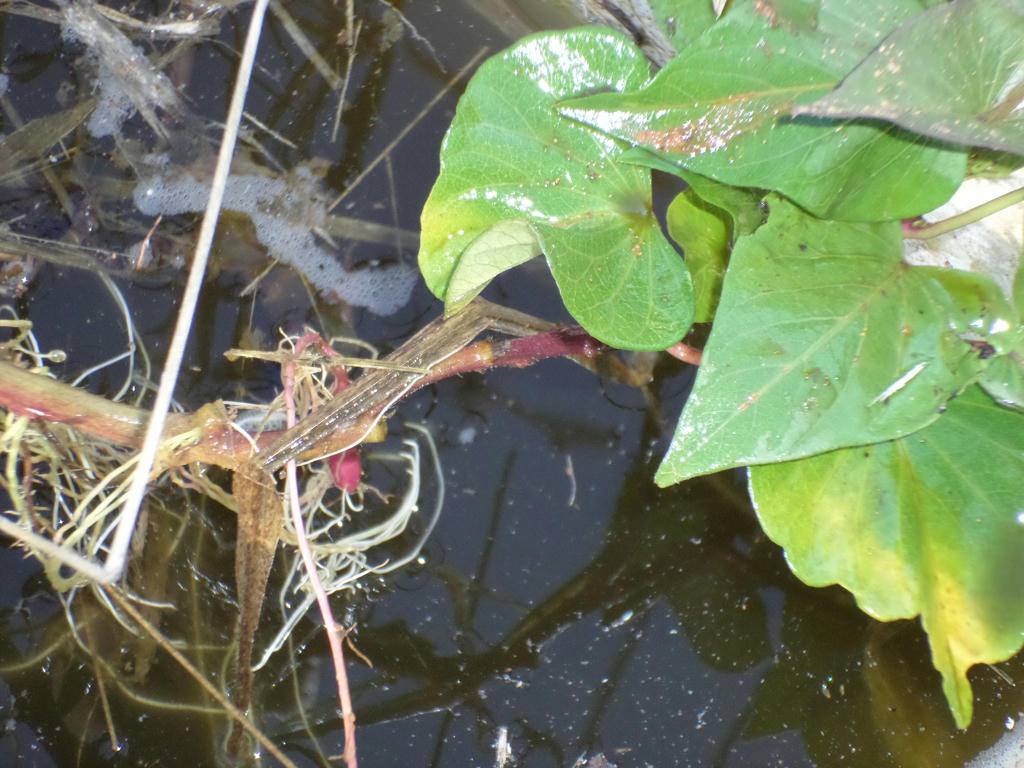
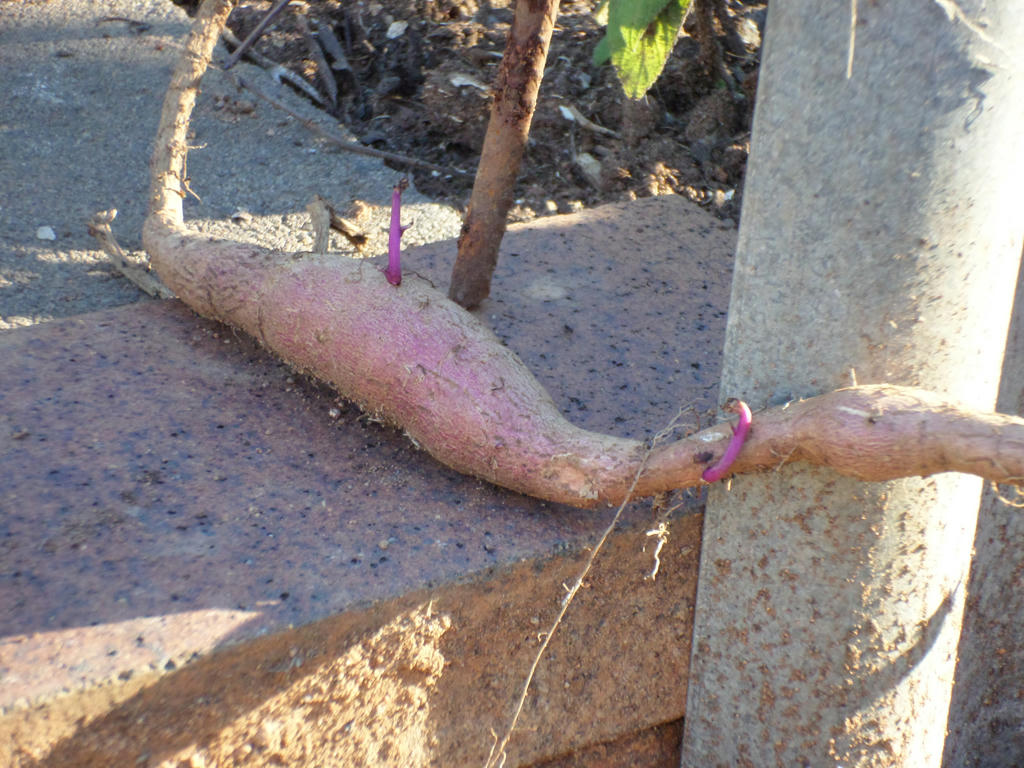
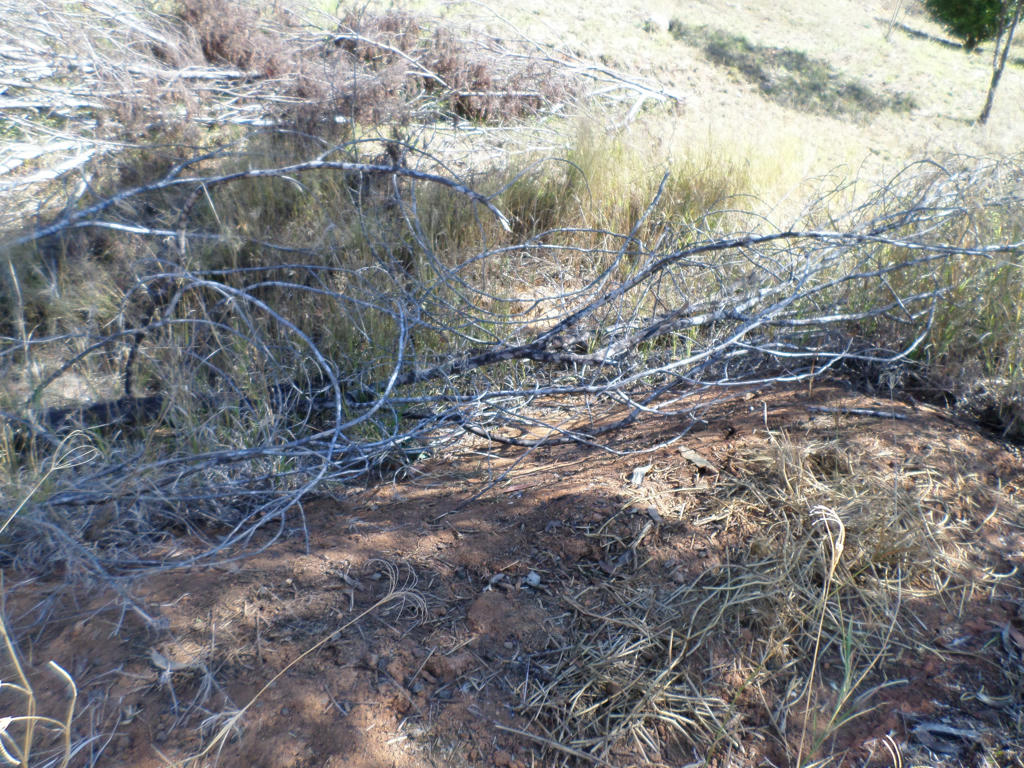
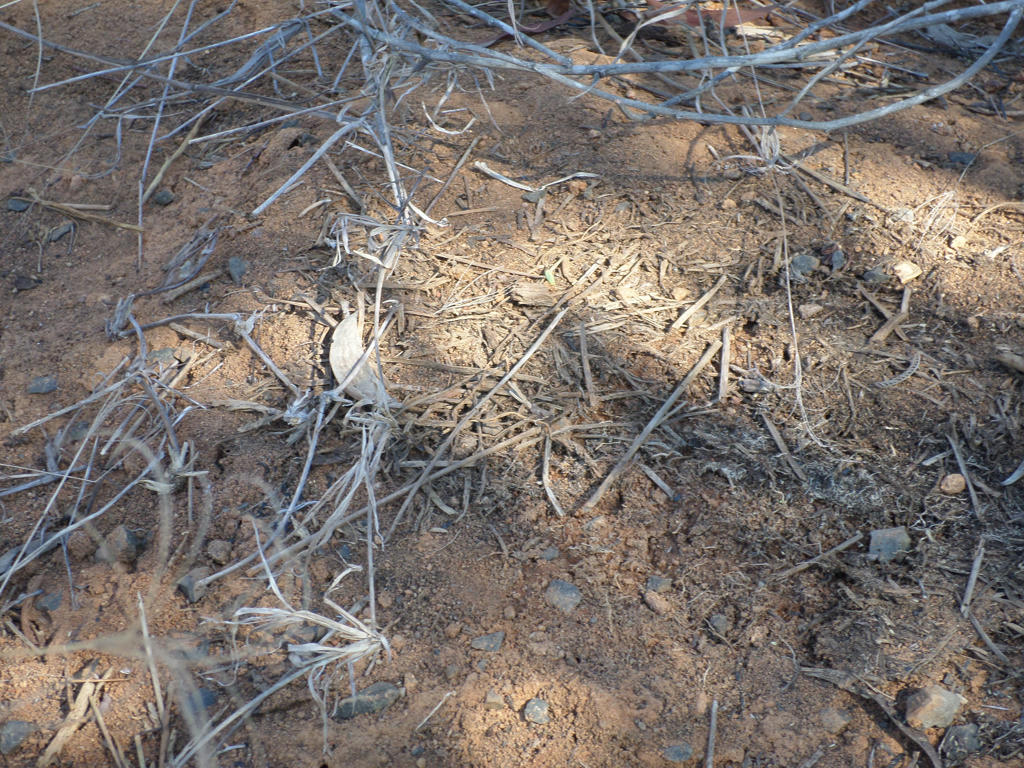
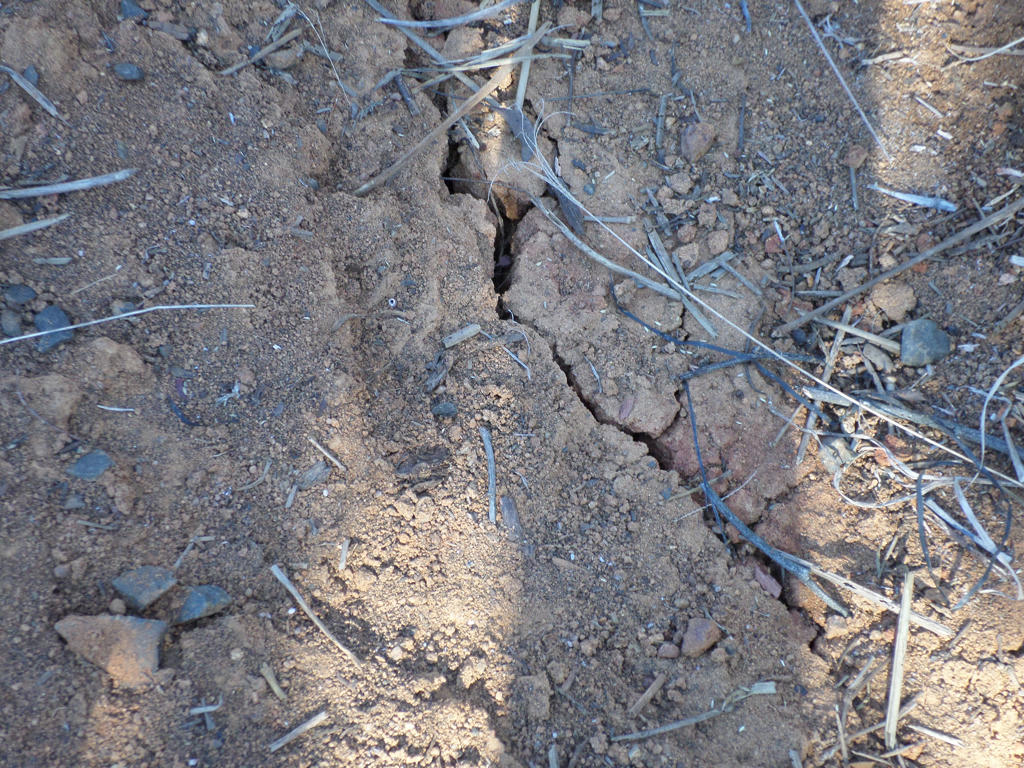
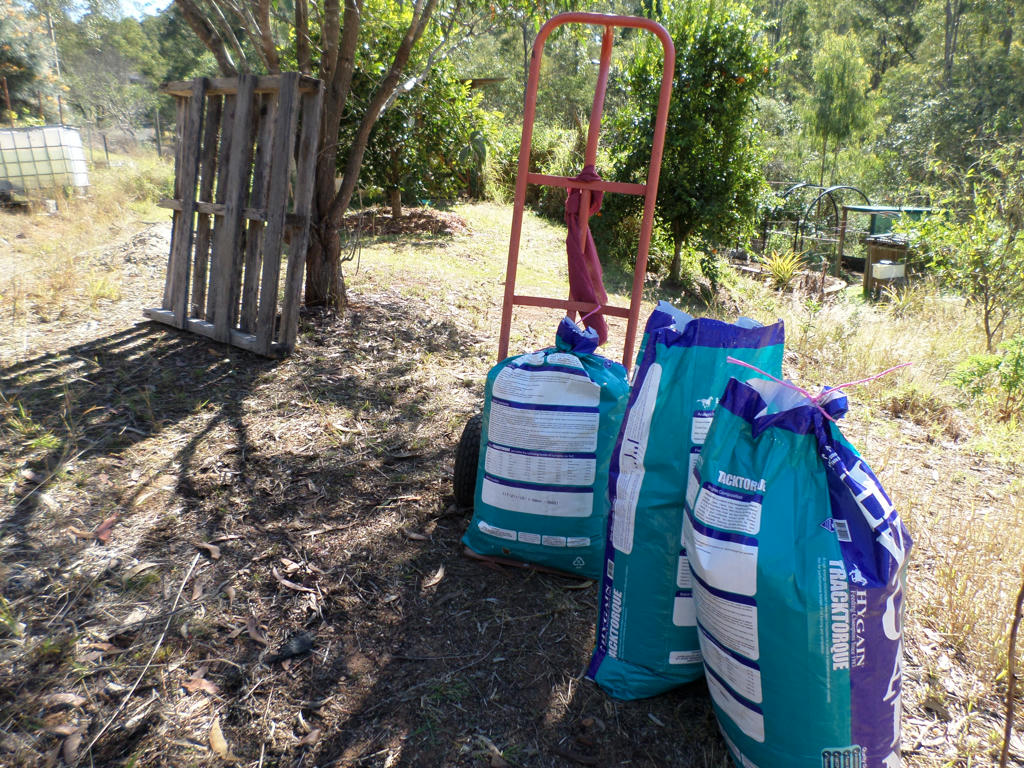
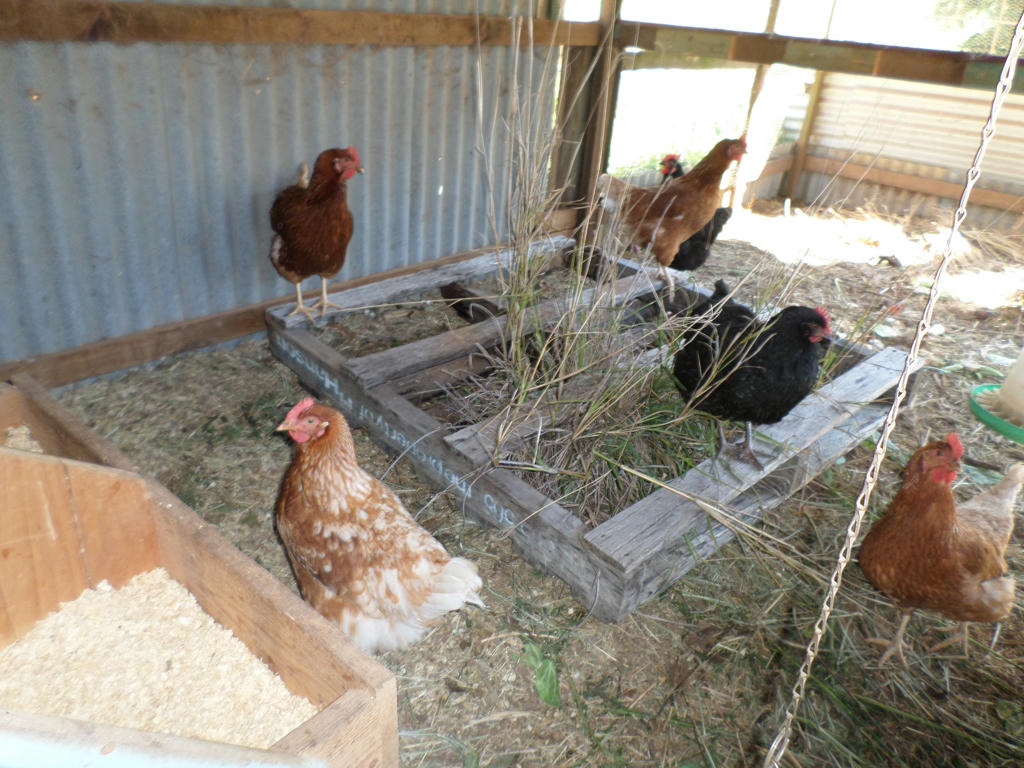
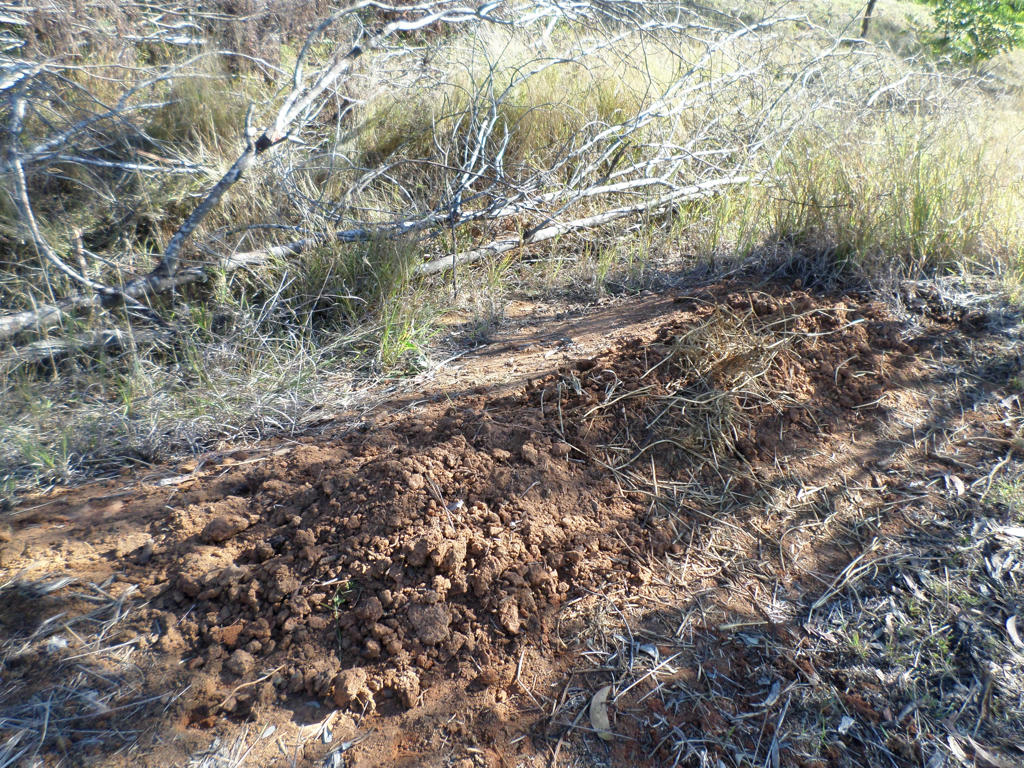
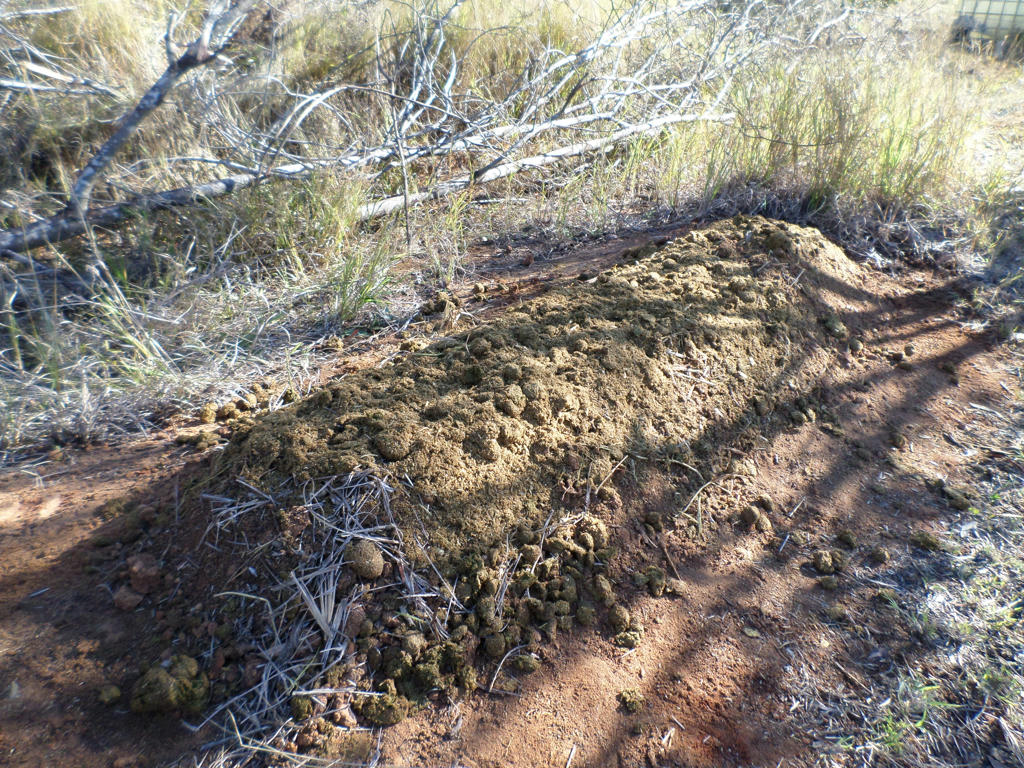
Much of our soil is heavy black clay here too. I've found though that a good mulching will help the cracking issue tremendously. That and a healthy dose of worms! Where our small (currently broken down) tractor has been resting for some time, the soil underneath is nothing short of fluffy! The worms have been safe to work and the tractor and its cover has in effect provided mulching. :) A layer of straw or something, some compost or manure etc and then slips with some mulch on top would work well too I'd think. :)
ReplyDeleteHello Jessie. Nice to meet you. So long as the clay can keep its moisture, it won't completely dry out and crack. So you're right about the mulch helping. I've noticed anything that can help shade the ground also, like trees or man-made structures, prolongs the moisture for longer.
DeleteI do intend to mulch when I put the slips in. By the way, those pesky bush rats, made off with some of my sprouting tubers! Luckily I have some more ground to dig up soon, with sweet potatoes in it, and I'll keep those inside. ;)
Gypsum is the Amish farmers best friend in our area. I think we will have to purchase some this next year as well. We have been noticing those cracks in the neighbor corn farmers soil and in small patches on ours now. Watering by hand or the heavy rains don't seem to hold it at bay so we are spending time reconditioning our soil before it spreads.
ReplyDeleteI keep forgetting to plant sweet potatoes even though I have alot of room for it. Its not a common seed to find in the spring but I forget to sprout mine in time. I am going to have to start a calender this winter to make sure that I get to the tasks that I want to do in a timely manner. The one year we did manage to grow them, we only had a couple of plants but each potato was the size of a mans shoe and very delicious.
I'm sure those cracks mean something, like the ground water is diminishing or the heavy machinery used, compacts the surface of the soil. I know Peter Andrews spoke about big clay shelves, with enormous cracks that some early explorers came across in Australia. They would stay like that (often years) until the flooding rains arrived. He said the cracks allowed the flood water to sink deep down below the surface, before the cracks closed up and the water started to run over land again.
DeleteThis is indicative of arid climates, with low rainfalls, and minimal groundwater. It's nature's way of replenishing the deep aquifers during flood years. So in some landscapes, cracks need not be a bad thing (or it could be a worse thing without them) but heavy rain makes the best use of them.
I didn't realise the Amish used gypsum, as it's somewhat of a heavily processed product. But it helps plants to grow in heavy soils, so I can see why they would make compromises to use it. Thankfully, its pretty inexpensive as far as soil additives go. I wouldn't be without it. There's always a large bag around to grab handfuls, especially if I'm planting trees. Gives them a good head start, if they don't have to fight the soil to put down roots.
Sweet potatoes are really yummy, and they can get very big. I hope you manage to get some in the ground next year. :)
The U.S. is heading into some serious drought issues and Wisconsin is one of the states that is being hit already. We have been slowly but surely getting drier climate but we do have decent ground water for now. The local farmers don't irrigate but they use lots of chemicals and I think that is a part of the problem. My husband has been addicted to tilling in our garden and I blame our own cracks on that but we have the same cracks in other parts of the property that are untouched. I think its the clay content in the soil-when it dries it dries.
DeleteThe Amish are really into soil ammendments when they are needed but they are always aware of having too much-does gyspsum add lime? I can't recall what it is it contains. At anyrate they are careful to do things slowly and simply when possible. They watch and see what happens. I wish they would teach me more!
As far as I know, gypsum and lime are related (calcium) but act in different ways because one is a sulfate and the other, a carbonate. Lime can affect soil PH, while gypsum doesn't. Gypsum adds calcium and sulfur but not the benefits of lime.
DeleteIt also depends on the quality of gypsum (brand you buy) as well, as they're made up with different ratios/fillers, etc. So its best to add lime if you want the qualities of lime, rather than subbing with gypsum which can be variable. :)
I forgot to mention that you have to be careful with the Jerusalem artichoke you planted when you dig it out. It will take over regardless but if you happen to spear even some of it-it will grow a new plant. We will never starve here thanks to that but I wish I planted it elsewhere.
ReplyDeleteDo you leave your Jerusalm artichokes in the ground over winter, or do you pull them and store inside? I imagine you wouldn't want to be moving them around much, given they seem to spread so easily. Thanks for the heads up. I read that you should plant them where you want them to grow, because its difficult to remove them from the area once established.
DeleteI did select this particular bed for them as a permanent arrangement. Though, they may try wandering into the adjoining bed as the clump spreads. I'll try to be extra careful while digging.
I wanted Jerusalem artichokes, because they were considered hardy edibles. We never know what's going to happen during the growing season, but those die-hard survivors, always deliver a crop. Do you have any tips or recipes to use them in? I imagine you'll be ready to start digging them up soon, now that its Autumn in the northern hemisphere.
I planted them in my forest garden but failed to give them space between some trees so they are a bit of a mess. I just keep them mowed down knowing they will be there if I need them. I keep them in the ground as they are considered to be best in early spring. In some cases autumn is okay to harvest too-after a frost is what I was told.
DeletePeople eat them raw here, on salads for example but I have heard they cause stomach upset that way in some people so go slow. There are pickling recipes as well and they can be added to stir fry or pan fried as a side dish or even roasted with other root vegetables. I am not wild about it but I am trying to learn to like it more-its pretty bland I suppose.
I do love a good stir fry, and roast during winter, so I could try it that way to start. Thanks for the suggestions. :)
DeleteI've never tried to grow sweet potato here in Melbourne, because I thought it would be impossible, being a tropical species. But then I see from some blogs that people have managed to grow it this far south.
ReplyDeleteSo what should I do? If I leave a tuber in the back of the cupboard long enough, will it sprout? I usually buy one tuber a week (I like the orange fleshed variety best), but it gets eaten through the week and never stays long enough in the cupboard, unlike ordinary potatoes which get forgotten and sprout with monotonous regularity.
Is there a trick to make them sprout?
I know Linda (ihearecos) is from the Northern Hemisphere where it snows, and they are able to grow sweet potato as an annual crop. I can leave mine in the ground over winter, because I don't really get frost, on top of a stone retaining wall - though I'm going to have to revisit that idea (I think) to deter the bush rats.
DeleteThere's a link from a successful sweet potato crop in the Northern Hemisphere, here:
http://thedeliberateagrarian.blogspot.com.au/2011/10/growing-sweet-potatoes-in-my-northern.html
It discusses the temps and when a crop should be harvested, how to cure it, etc.
Tubers like warmth in order to sprout. Unlike potatoes, they don't require darkness. Though if they have heat in a dark area, they will sprout. Where you might come undone though, is if you are buying commercially produced tubers, as they can spray chemicals on them to deter sprouting. If you can get stock from another gardener or an organic shop, you may have more success.
Try putting your tubers on concrete in direct sun, to help them sprout - I'd bring them in at night though, or the rabbits might make off with them. I had all my sprouting tubers nicked overnight, by marauding bush rats. I had them on my retaining wall, and then - gone! So beware the hungry veggie thieves. ;)
I tried growing the orange sweet potatoes (Beauregard) but they didn't do as well as the Japanese variety. I imagine Japan can get some cool temperatures, so perhaps the variety helps as well. Though I think you can trick your crop by where you plant it also. If you can give it a place near retained heat, like near a large stone mass (concrete, large rocks, brick walls, etc) then you'll really give them optimum conditions to thrive.
I should also add that you need to be careful planting sweet potatoes near man made structures, as they can lift them as they grow. They seem to love finding the moist areas near hard surfaces, and then send down roots to develop a tuber. I don't have mortar on my retaining wall, but they were able to lift up the first course of bricks in some places, where a large tuber grew.
DeleteI would recommend, if you're going to plant them in the soil, near a man made structure, putting down a root barrier, at least 30cms - like roofing iron. It might sound like a lot of trouble to go to, but it will save you grief in the long run, while still giving your sweet potatoes great growing conditions. :)
Or you could bring rocks to put around the sweet potato bed, and it doesn't matter if they get lifted, because they're not permanent.
I'm not sure of the details but I'm sure they are online, but the Amish sprout them in jars-sort of like avacado seeds. But I have found sprouted ones in my potato bin. I was going to sprout in jars since I can control that somewhat.
DeleteI wish my sweet potatoes would spread a little! It's amazing that it's a problem for you, but too much of anything is not a good thing. Great job on the bed. That's a lot of work but worth it.
ReplyDeleteMy favorite use of chickens is for composting. Since we moved the compost bins into the chicken yard we have had the quickest and the best compost ever. And will less work on our part! It still needs a bit of turning, or I should say rearranging for the chickens to get to it. They do an amazing job at that.
Using chickens for compost is a great idea. I'm glad the system is still working for you.
DeleteThat's one experiment worth keeping. :)